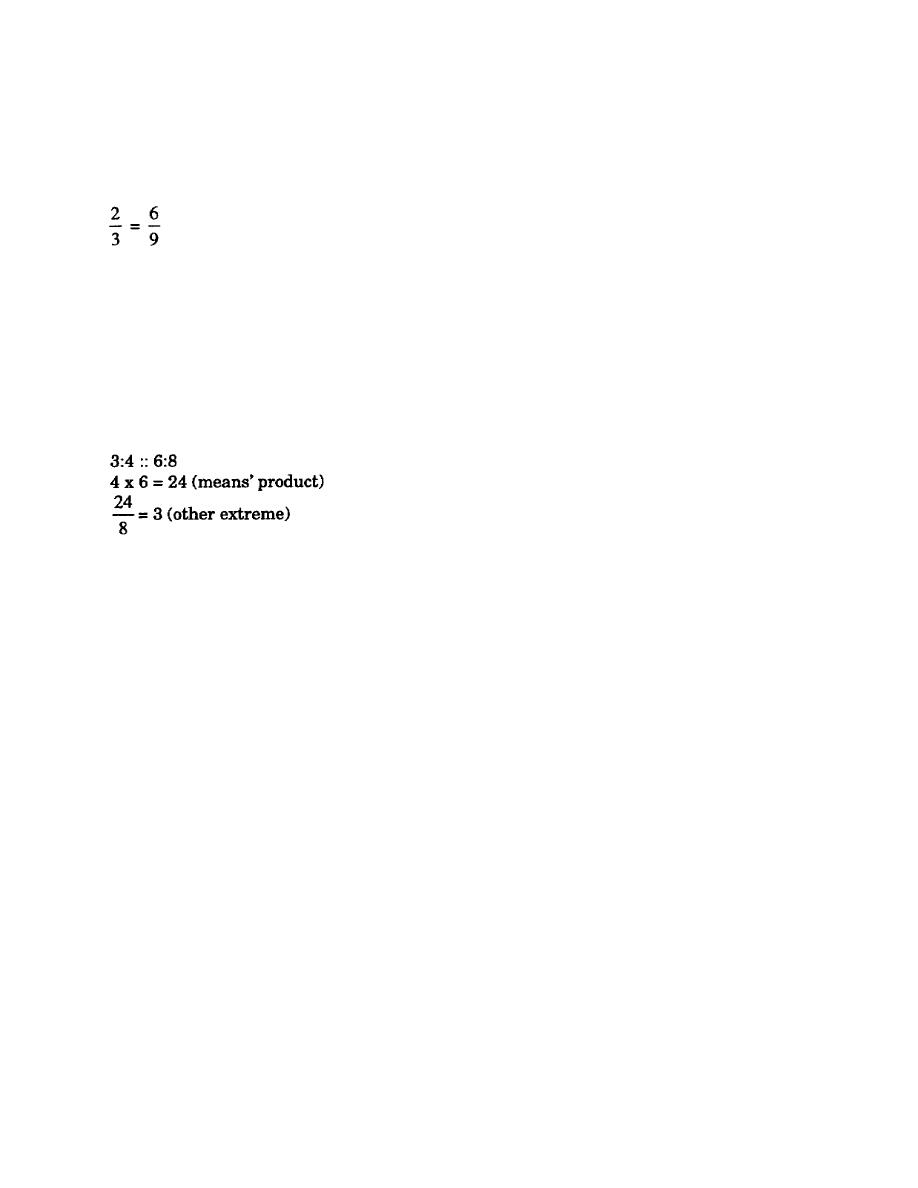
(c) 3 x 6 = 18 (means' product)
When the same problem is expressed in another form, the operation remains the same.
In this case, the proportion is expressed in a fractional form so that the numerator of one fraction is
multiplied by the denominator of the other fraction. This is called the cross-multiplication process.
2 x 9 = 18 (extremes' product)
3 x 6 = 18 (means' product)
(2) The second rule is that in any proportion the means' product divided by either extreme
gives the other extreme.
(3) The third rule is that in any proportion the extremes' product divided by either mean will
determine the other mean.
2:3 :: 4:6
2 x 6 =12 (extremes' product)
12/3 = 4 (one mean)
12/4 = 3 (other mean)
d. The basic knowledge and appropriate use of the three proportion rules will aid you in
determining the value of an unknown term when the other three terms are known. A typical use of
proportion involves using the representative-fraction (RF) formula (RF = MD/GD), which is effective in
determining ground distance (GD), map distance (MD), or the RF. Most, if not all, maps express their
scales as a ratio or RF; that is, one unit on the map is equal to so many units on the ground. This map-
to-ground relationship is extremely versatile since any kind of unit can be used to determine the map's
RF. Thus, 1 inch on the map is equal to so many inches on the ground; the same ratio holds true for feet,
meters, or yards. As a result, a map of a certain scale, or RF, may show that 1 foot on the map is equal
to 20,000 feet on the ground. Therefore, the map's RF is 1:20,000. If a map of this scale were to be
used, it would be easy to determine the actual distance (or linear measurement) of a survey line on the
ground. See the following example:
Example: What is the length of a survey line on the ground if it measures 5 inches on a map having a
RF of 1:20,000? Set up the problem using the RF formula (RF = MD/GD). Use the known information
and write the proportion. Let x represent your unknown extreme.
2-3
EN0591



 Previous Page
Previous Page
